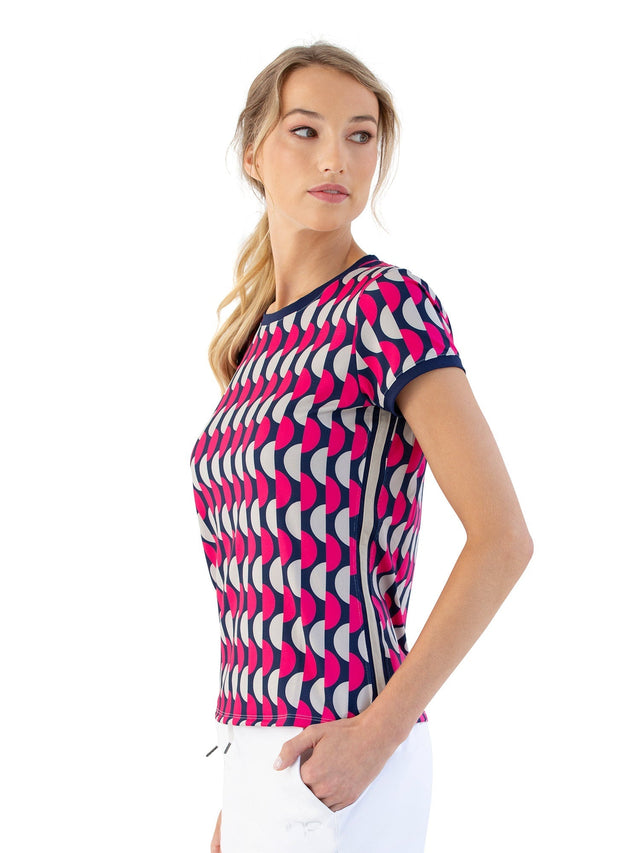Sustainability isn’t just about what you wear—it's about how it's made, used, and reused. At Inphorm, our commitment to the sustainable activewear lifecycle shapes every step of our design and delivery process.
From mindful sourcing to responsible recycling, each stage reduces environmental impact and enhances long-term value. Explore our eco-conscious collections designed to support both your performance and the planet.
Understanding the Sustainable Activewear Lifecycle
The journey of eco-friendly activewear can be broken down into distinct stages, each with unique environmental implications and improvement opportunities.
These stages include:
- Raw material selection
- Fabric production
- Garment design and assembly
- Consumer use phase
- End-of-life management
Our focus at inPhorm is to optimize every stage for lower waste and greater responsibility.
Table: Lifecycle Stages and Environmental Impact
|
Lifecycle Stage |
Focus Area |
Sustainable Action |
Impact |
|
Raw Materials |
Fabric Sourcing |
Organic cotton, bamboo, recycled poly |
Reduced water use |
|
Fabric Manufacturing |
Dyeing, weaving |
Low-impact dyes, ethical factories |
Lower chemical use |
|
Garment Production |
Cutting, sewing |
Efficient patterns, minimal waste |
Lower fabric waste |
|
Consumer Use |
Washing, maintenance |
Cold washes, long-lasting design |
Reduced microplastics |
|
End-of-Life |
Disposal or recycling |
Biodegradable or recyclable materials |
Less landfill impact |
Raw Material Selection: The Foundation of Sustainability
The lifecycle begins with raw materials. Choosing the right fiber is critical for minimizing the environmental footprint. At inPhorm, we use:
- Organic cotton: Grown without harmful chemicals
- Recycled polyester: Diverts waste from oceans and landfills
- Bamboo viscose: Naturally regenerative and breathable
See our organic and bamboo collections for examples of high-performance, low-impact gear.
Eco-Friendly Production Process
The production process plays a pivotal role in overall sustainability. Traditional methods are resource-heavy, using large amounts of water, energy, and chemicals.
inPhorm takes several steps to reduce production impact:
- Closed-loop water systems
- Non-toxic, water-based dyes
- Minimal energy manufacturing
These techniques ensure our eco collections remain kind to people and the planet.
Circular Design Philosophy
Unlike fast fashion, we embrace circular fashion—where garments are designed to be reused, repaired, and eventually recycled.
Our strategies include:
- Reinforced seams for longevity
- Timeless silhouettes for year-round wear
- Modular design enabling easy repair or upcycling
Learn more about how we reduce waste by design through our sustainability approach.
Consumer Use: Care That Extends Wear
The way activewear is cared for impacts its environmental cost. Sustainable activewear should be built for performance and endurance.
Tips for consumers:
- Wash in cold water to preserve fabric and reduce energy
- Air dry to avoid elastic breakdown
- Avoid harsh detergents
Recycling and Repurposing
End-of-life doesn’t have to mean the end of usefulness. inPhorm supports recycling and garment repurposing to extend the lifecycle of every item.
Key approaches include:
- Donating well-maintained garments
- Transforming old leggings into gym bags or scrunchies
- Working with textile recyclers to close the loop
Infographic: Circular Journey of Sustainable Activewear
🌱 Fabric Selection → 🧵 Eco Manufacturing → 🧘 Use & Care
→ 🔄 Repair or Repurpose → ♻️ Recycle → 🌍 Reduced Impact
Each loop of the cycle helps reduce consumption, waste, and pollution.
Biodegradability and Decomposition
Some of our materials, such as organic cotton and bamboo, are biodegradable, meaning they break down naturally after disposal.
Time to decompose:
- Organic cotton: ~5 months
- Bamboo viscose: ~6-12 months
- Polyester (not recycled): 20–200 years
Opting for garments with natural fiber reduces the burden on landfills and oceans.
Chart: Biodegradability Comparison
|
Material |
Biodegradable |
Time to Degrade |
|
Organic Cotton |
Yes |
5 months |
|
Bamboo Viscose |
Yes |
6–12 months |
|
Recycled Polyester |
No |
20–200 years |
|
Nylon |
No |
30–40 years |
Real-Life Impact: What You Save with Sustainable Choices
By choosing one eco-friendly outfit from inPhorm, you save:
- Up to 2,700 liters of water
- The equivalent of 5 plastic bottles
- 0.5 kg of CO₂ emissions
Imagine the impact of an entire wardrobe shift—small actions, big results. Browse our newest sustainable drops.
Tips for Extending Garment Lifecycle
Extend the life of your inPhorm apparel with these pro tips:
- Wash gently with eco-detergents
- Avoid dryers—opt for line drying
- Rotate garments to reduce repeated stress
- Patch or sew small damages early
Final Thoughts: Choose Clothes That Close the Loop
Sustainability is a full-cycle commitment. The sustainable activewear lifecycle—from production and performance to recycling—matters more than ever.
At inPhorm, we believe in conscious fashion that elevates your fitness and respects the Earth. Our materials, practices, and designs align with nature’s rhythm and your lifestyle.
Explore our full collections at inphormnyc.com or reach out via our contact page to take the next step in eco-conscious living.
Frequently Asked Questions
Sustainable activewear combines eco-conscious fabric sourcing, low-impact production methods, ethical labor practices, and responsible end-of-life solutions like recyclability or biodegradability. It emphasizes reducing environmental harm while promoting worker welfare and garment longevity. Brands like inPhorm focus on this full lifecycle to ensure that every piece supports both personal performance and planetary well-being.
Yes, you can recycle activewear through textile recycling programs, clothing donation centers, or brand-led initiatives. Some companies even offer take-back schemes. Lightly worn items can be donated, while damaged ones may be downcycled into insulation or industrial materials. Always check garment labels and local recycling options to ensure proper disposal of synthetic or blended fabrics.
To determine eco-friendliness, check for certifications like GOTS, OEKO-TEX®, or Bluesign®. Review fabric types—such as organic cotton or recycled polyester—and explore the brand’s transparency around sourcing and manufacturing. Truly sustainable brands often provide details about their carbon footprint, dyeing process, and packaging to help conscious consumers make informed and responsible choices.
Yes, most sustainable activewear is designed for extended wear. Durable fabrics, reinforced stitching, and high-quality finishing ensure these garments maintain their shape and performance over time. Investing in ethically made pieces can reduce the need for frequent replacements, making them more cost-effective and environmentally responsible in the long run.
Bamboo fabric has several sustainability advantages. It grows quickly without pesticides, uses less water than cotton, and naturally resists bacteria. Its silky texture and breathability make it ideal for activewear. While organic cotton is also eco-friendly, bamboo stands out for its regenerative cultivation and performance in moisture-wicking, making it a strong contender in sustainable fashion.
More stories

Comparing Traditional vs. Sustainable Sportswear


